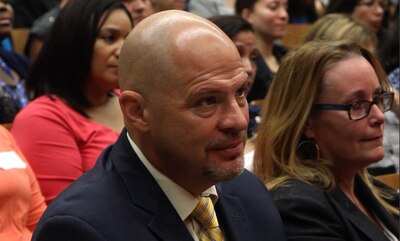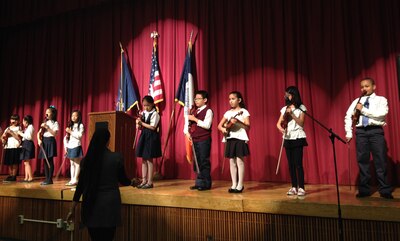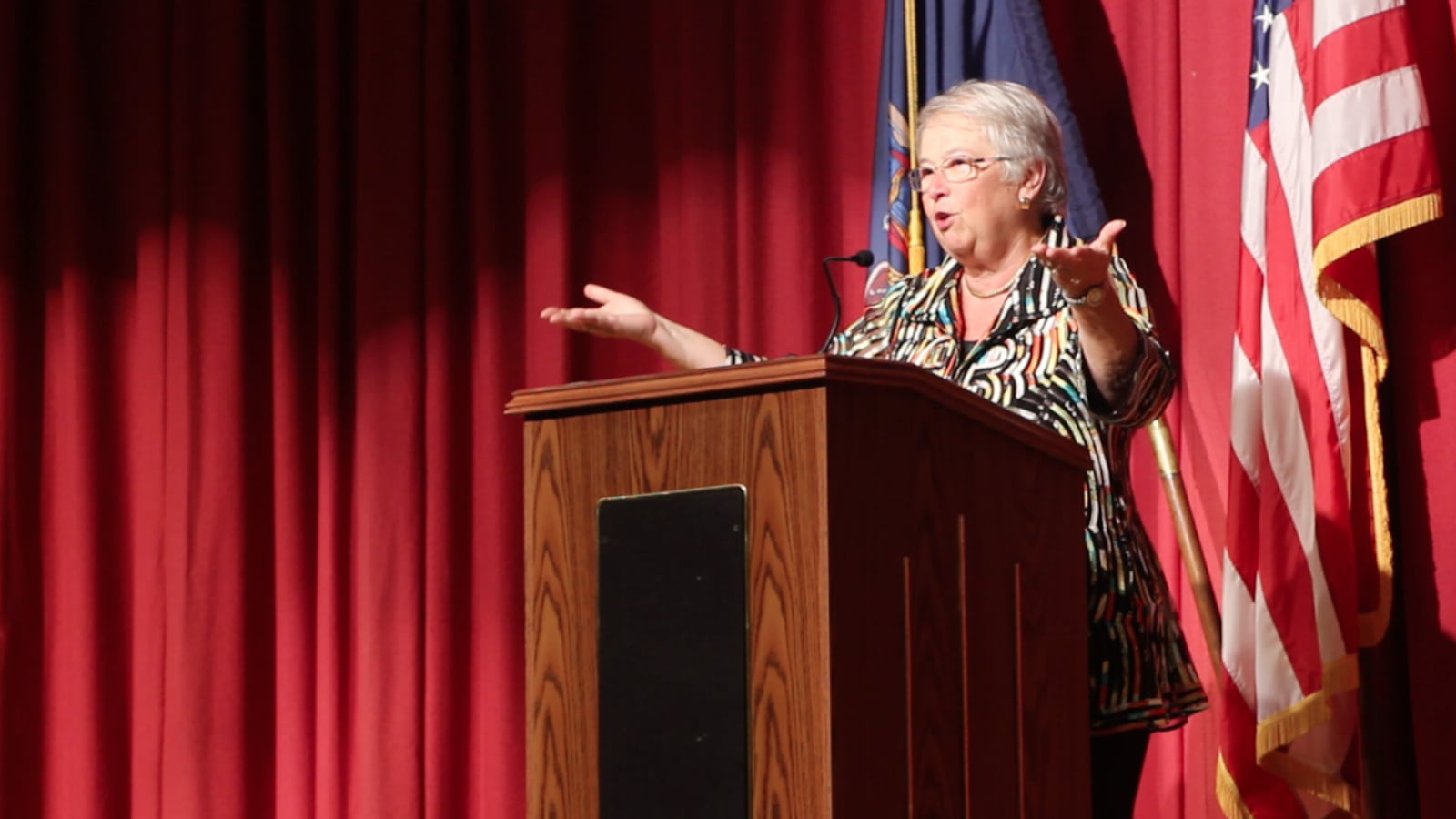The city has revamped the way it rates schools, schools Chancellor Carmen Fariña announced Wednesday, transforming school report cards into something more like online reviews.
Schools will no longer receive annual progress reports that rank them and give them A-to-F letter grades, which Fariña and many educators have condemned as blunt and unreliable. Instead, beginning this fall, the city will produce separate guides for educators and families about every school that highlight the results of surveys and classroom observations alongside students’ test scores and course grades.
The new evaluations reflect the school system’s sharp swerve under Mayor Bill de Blasio and Fariña away from a philosophy of competition and consequences as the drivers of change, to one where school improvement is seen as the fruit of cooperation and support. In fact, Fariña did not say Wednesday whether low-performing schools would face any repercussions or interventions — a point that critics seized on — only saying that they would be given customized support.
“This is a totally new approach,” Fariña said during a speech at P.S. 503/P.S. 506 in Sunset Park, Brooklyn. “We are no longer penalizing a school for its weaknesses.”
Since 2006, the city has issued schools annual progress reports with overall A-to-F grades and percentile rankings. While the education department has added a greater variety of data to the reports over time, students’ state test scores have until now largely determined the grades that elementary and middle schools receive. (High schools’ grades factor in graduation rates, how quickly students earn credits, and how well students are prepared for college.)
Because low-rated schools could face sanctions and declining enrollment, critics said the grades spurred some principals to manipulate data and teachers to center their classes around test preparation. Meanwhile, because schools were compared to their peers, sometimes schools with scores above the city average still earned low grades on the reports.
“I don’t think that they were an accurate or fair representation in a lot of instances,” said Dionne Grayman, co-founder of the public-school parent advocacy group, NYCpublic.

More description than assessment, the new guides are meant to give parents a fuller picture of schools and help educators take stock of what’s working and what needs to be fixed without feeling judged, officials said. They repackage many of the same metrics that the previous administration used to measure schools, but they avoid giving them final ratings — which under the Bloomberg administration could lead to sanctions and even closure if schools earned low grades.
Now, the city will create a shorter “quality snapshot” for families and a “quality guide” for staffers or those who want more data. Neither features an overall school rating.
The snapshots include student test scores, graduation rates, and some survey data, as the progress reports did, but add ratings of the quality of teaching and curriculum in schools that are based on formal school observations.
The 16-to-18-page guides describe schools’ student populations, give excerpts from the formal review findings, and provide detailed data about how well students performed on tests and schoolwork, similar to the progress reports. But instead of giving schools letter grades based on student performance, the guides say whether schools are “not meeting,” “approaching,” “meeting,” or “exceeding” a target score that the city will calculate for each school.
Sean Corcoran, an education economics professor at New York University who consulted department officials this year as they redesigned the evaluations, said the new guides feature much of the same information as the older progress reports. But by removing the overall ratings, the new guides will force readers to look more closely at data they may have glanced over before, he added.
“These reports do a good job of making families and schools look a little deeper than just a letter grade,” he said.
But the lack of letter grades also could present a new burden for families sorting through dozens of school guides during the admissions process. School officials acknowledged that on Wednesday, saying the department would have to train parents to read the new guides.
The evaluations put new emphasis on the results of the annual surveys that students, parents, and educators take, as well as the findings of the formal school observations. Fariña said she would improve those tools by making sure they measure certain characteristics of good schools, such as strong leadership and close ties with families. Officials also said they would conduct more school observations this year, though more than a quarter of schools will not be visited.
While the surveys and observations might catch qualities of a school that test scores miss, they are also susceptible to tampering, some educators said. Geraldine Maione, the former principal of William Grady Career & Technical High School, said she knew of schools that gave students and parents food while they took the survey as a way to boost the results. Because the school review visits are announced ahead of time, they often amount to “dog and pony shows,” she added.
A former department official who helped design the original progress reports said that some metrics on the new quality snapshots, such as “How interesting and challenging is the curriculum?” are “impossible to measure consistently.”
“There’s no additional sunlight there,” the official said, “just the replacement of a scale that seems too harsh to some with language that seems mushier to others.”

Fariña also said very little about how the department will use the new evaluations, particularly when they show that schools are struggling.
In the past, schools that earned consecutive low grades were given improvement plans and could eventually face closure. The new administration has made clear that closure will now be used only as a last resort, but Fariña did not describe on Wednesday what sort of interventions the city will take for schools found to be low performing. Officials said in a briefing after her speech that they are still discussing how to use the new evaluations to design supports for schools, but they “anticipate talking more about that in January.”
Groups that supported the previous administration and have been critical of Fariña called her speech a disappointment and said it failed to address head-on the city’s many struggling schools. Even people who praised the new evaluations said it was troubling that the city did not say how it will use the ratings to prop up low-performing schools.
Joseph Viteritti, a public policy professor at Hunter College, said the evaluation shift represents an improvement from the previous administration’s “top-down approach to reform.”
“Unfortunately,” he added, “it does not outline a real plan for what [this administration] intends to do with failing schools.”
Sarah Darville and Geoff Decker contributed reporting.


